Contributory members are able to log private notes and comments about each site
Sites Bat400 has logged. View this log as a table or view the most recent logs from everyone
Marsden Mounds
Date Added: 28th Apr 2017
Site Type: Artificial Mound
Country: United States (The South)
Visited: Yes on 3rd Sep 2012
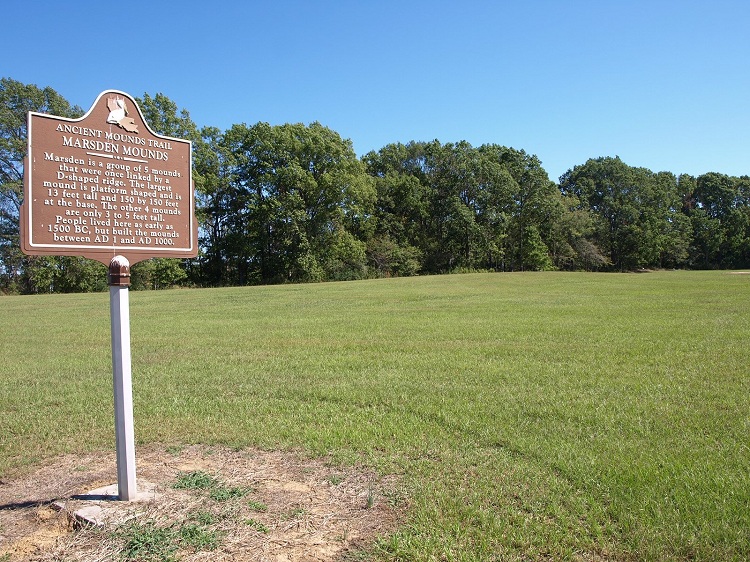
Marsden Mounds submitted by bat400 on 3rd Sep 2012. Mound A lies between the marker and Mounds B, C, and D, which are right at the edge of the woods seen in the background. Mound A is large in diameter, but so reduced in height that it is difficult to see at all.
Photo by bat400, October 2011.
(View photo, vote or add a comment)
Log Text: None
Poverty Point
Date Added: 28th Apr 2017
Site Type: Ancient Village or Settlement
Country: United States (The South)
Visited: Yes on 4th Sep 2012
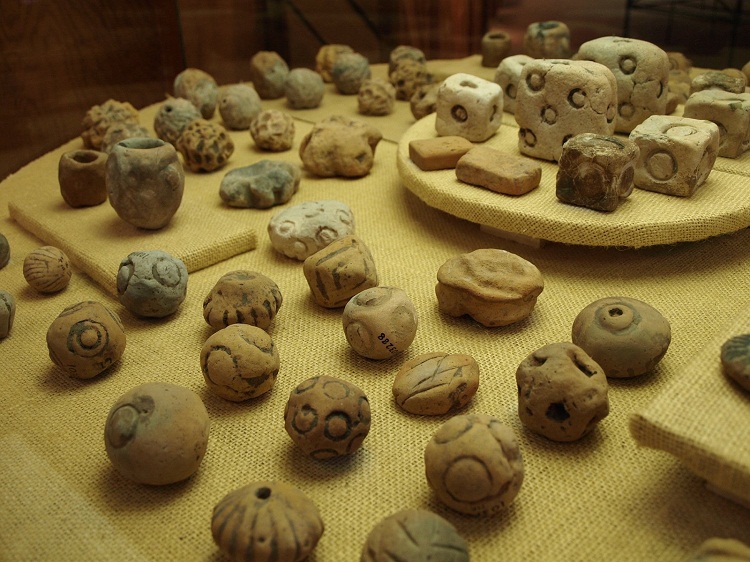
Poverty Point submitted by bat400 on 4th Sep 2012. The "Poverty Point Objects" (PPOs). These fired earthen balls and cubes are unique to the Poverty Point culture. These on display in the park museum are decorated, although many are plain. There is a lot of speculation on what purpose they served, but a general opinion is that they were heated used for earth oven cooking, the area lacks stones more generally used for similar purposes at other sites and called "fire cracked rock" (FCR).
Photo by bat400, October 2011.
(View photo, vote or add a comment)
Log Text: None
Poverty Point - Earthworks
Date Added: 28th Apr 2017
Site Type: Ancient Village or Settlement
Country: United States (The South)
Visited: Yes on 4th Sep 2012
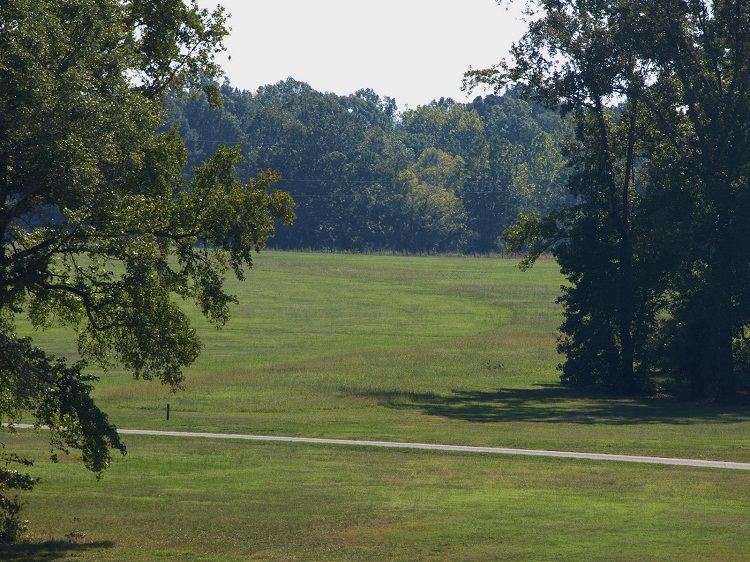
Poverty Point - Earthworks submitted by bat400 on 4th Sep 2012. A view from the top of Mound A of the semi-circular or octagon earthwork ridge area. The curve of a ridge can be seen in the different texture of the ground cover. The white structure is a "ghost dwelling" showing the rought footprint and speculated height of one of the dwellings that were built on the ridges.
Photo by bat400, October 2011.
(View photo, vote or add a comment)
Log Text: None
Poverty Point - Mound A
Date Added: 28th Apr 2017
Site Type: Artificial Mound
Country: United States (The South)
Visited: Yes on 4th Sep 2012
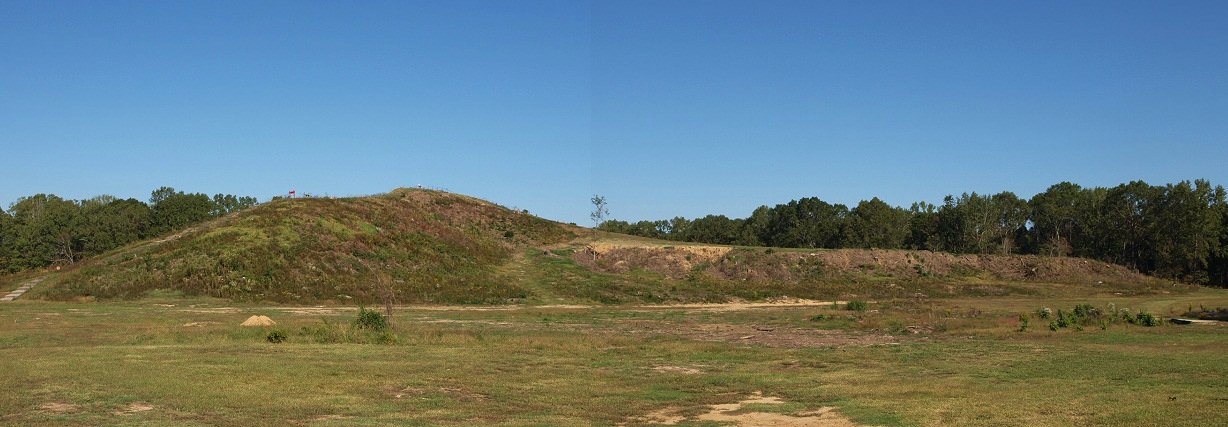
Poverty Point - Mound A submitted by bat400 on 4th Sep 2012. Mound A seen from the south east. The 'tail' of the bird is to the right. The highest point is across the wing span, on the 'bird's' back. There is a boardwalk that allows you to walk up onto the mound.
Photo by bat400, October 2011.
(View photo, vote or add a comment)
Log Text: None
Bynum
Date Added: 28th Apr 2017
Site Type: Barrow Cemetery
Country: United States (The South)
Visited: Yes on 6th Sep 2012
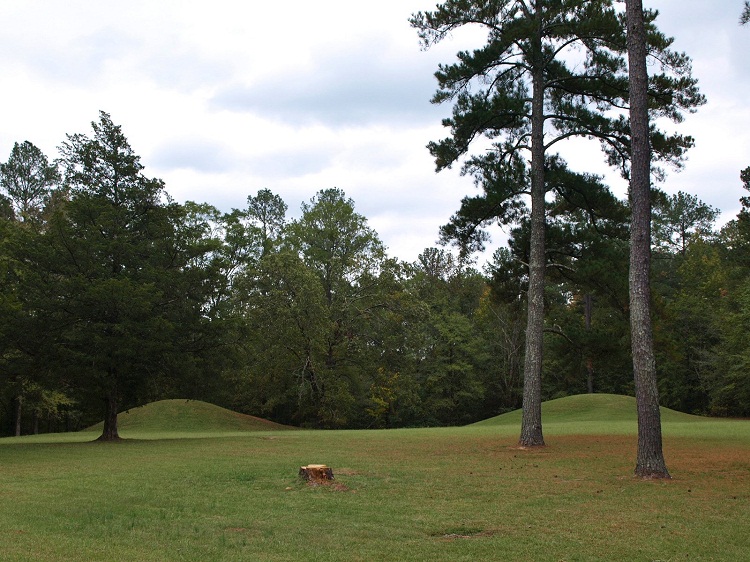
Bynum submitted by bat400 on 6th Sep 2012. Bynum Mounds and Village site. There were originally six burial mounds (the smaller ones much eroded by the plow.) All six were fully excavated and the two largest mounds were reconstructed .
Photo by bat400, Oct 2011.
(View photo, vote or add a comment)
Log Text: None
Pharr Mounds
Date Added: 28th Apr 2017
Site Type: Artificial Mound
Country: United States (The South)
Visited: Yes on 6th Sep 2012
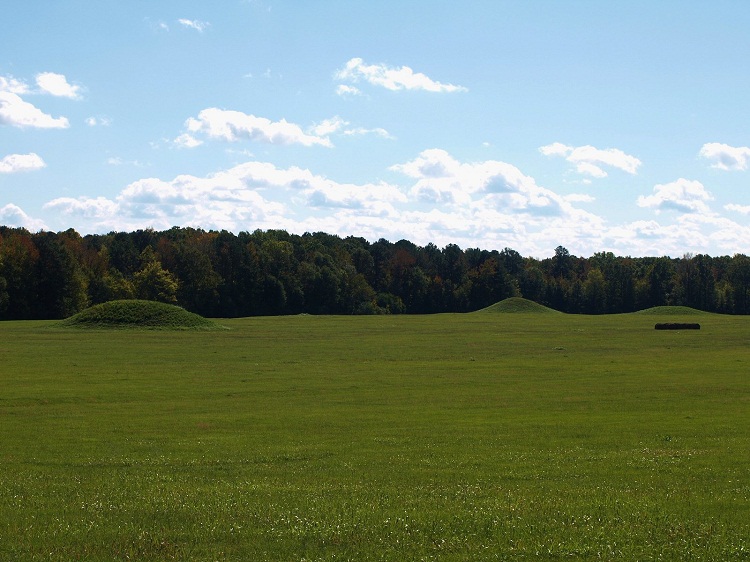
Pharr submitted by bat400 on 6th Sep 2012. Shows only some of the many domed burial mounds in the Pharr complex.
Photo by bat400, October 2011.
(View photo, vote or add a comment)
Log Text: None
Monterey Standing Stone
Date Added: 28th Apr 2017
Site Type: Standing Stone (Menhir)
Country: United States (The South)
Visited: Would like to visit on 1st Jan 0000
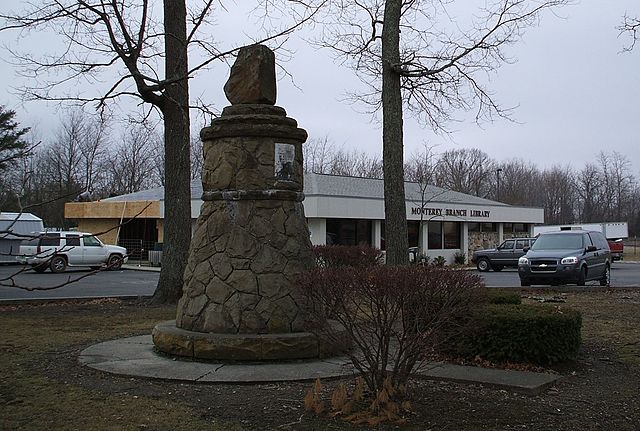
Monterey Standing Stone submitted by bat400 on 2nd Jan 2013. Photo by "Jtknoxguy," 2007.
"I, the copyright holder of this work, hereby release it into the public domain. This applies worldwide.
If this is not legally possible:
I grant any entity the right to use this work for any purpose, without any conditions, unless such conditions are required by law."
(View photo, vote or add a comment)
Kituwah
Date Added: 28th Apr 2017
Site Type: Ancient Village or Settlement
Country: United States (The South)
Visited: Yes on 24th Feb 2013
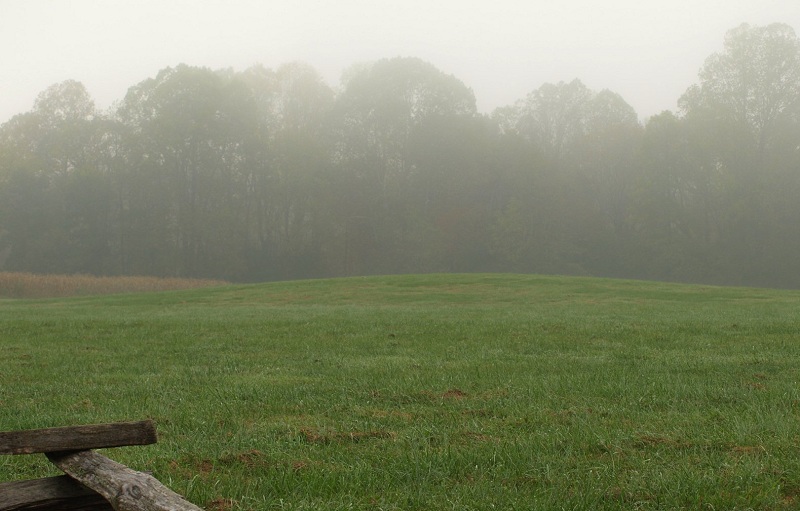
Kituwah submitted by bat400 on 24th Feb 2013. Kituwah. This town site in North Carolina is marked today by the remains of this earthen mound, much reduced from its original size to only about 5 feet high.
photo by bat400, Oct 2012.
(View photo, vote or add a comment)
Log Text: None
Coral Castle
Date Added: 28th Apr 2017
Site Type: Modern Stone Circle etc
Country: United States (The South)
Visited: Would like to visit on 1st Jan 0000

Coral Castle submitted by bat400 on 29th Oct 2013. Coral Castle Coral Castle was interesting, but didn't hold as much magic or mystery about it as other folk environments I've seen. Ed Leedskalnin created it in response to rejection from his true love, whom he refers to as "Sweet Sixteen," and who was ten years his junior. I couldn't help feeling that she'd made the right move. Image copyright: tackyjulie, hosted on Flickr and displayed under the terms of their API.
(View photo, vote or add a comment)
Bottle Creek
Date Added: 28th Apr 2017
Site Type: Ancient Village or Settlement
Country: United States (The South)
Visited: Would like to visit on 1st Jan 0000
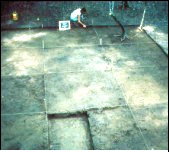
Bottle Creek submitted by bat400 on 17th Nov 2013. Excavation of house footprints. Sometime in the 1990's.
Credit: National Park Service.
(View photo, vote or add a comment)
Jupiter Inlet Mound
Date Added: 28th Apr 2017
Site Type: Artificial Mound
Country: United States (The South)
Visited: Yes on 7th Apr 2014
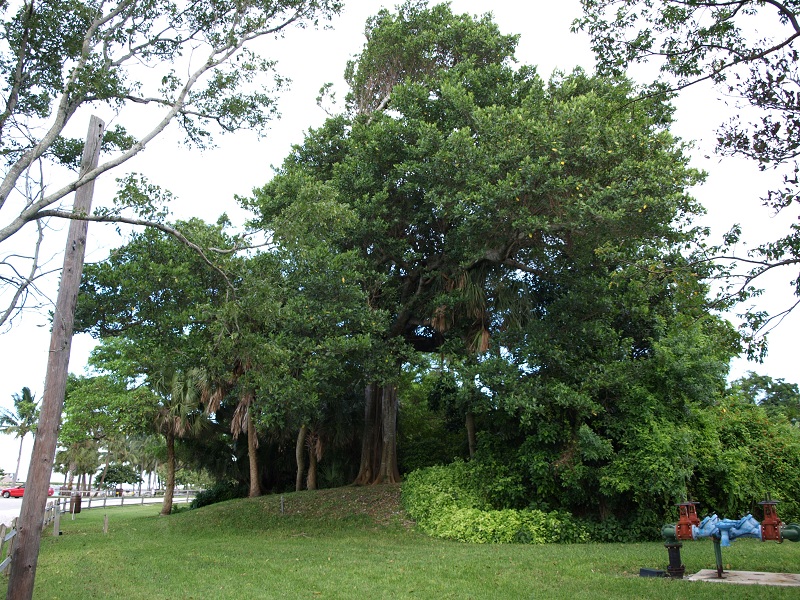
Jupiter Inlet Mound submitted by bat400 on 7th Apr 2014. Jupiter Inlet Mound. View from the west.
Photo by bat400, ca. 2008.
(View photo, vote or add a comment)
Log Text: None
Owl Creek
Date Added: 23rd May 2019
Site Type: Artificial Mound
Country: United States (The South)
Visited: Yes on 1st Jan 2010. My rating: Condition 3 Ambience 4 Access 5
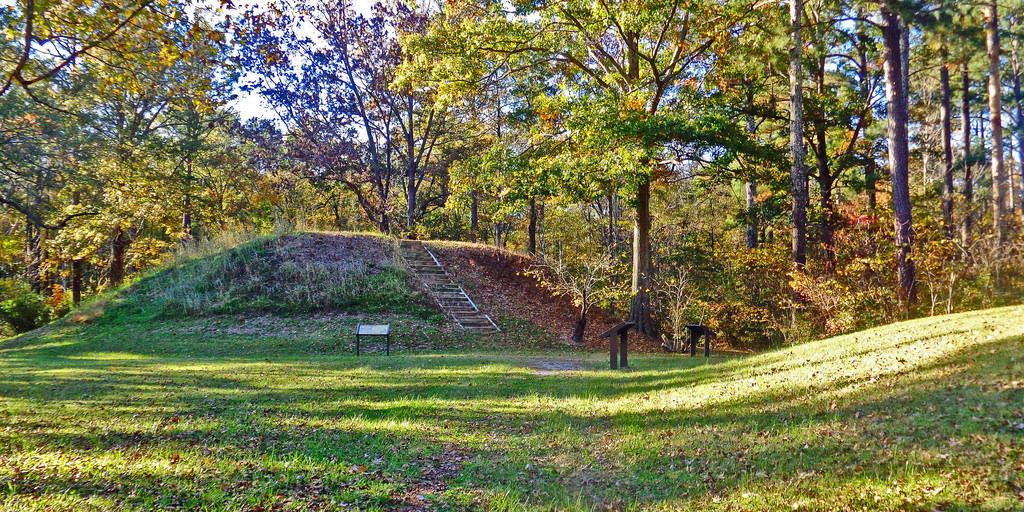
Owl Creek submitted by Creative Commons on 6th Jan 2019. Owl Creek Mounds The five Mississippian period platform mounds at this site were built between 1100 and 1200 A.D. The U.S. Forest Service owns two of the mounds including the largest 17-foot-high Mound I. Both are open to public visitation. Archeological excavations conducted at the site in 1991-1992 by Mississippi State University revealed the foundation remains of a ceremonial temple or elite residence that once stood atop Mound
www.nps.gov/nr/travel/mounds/owl.htm ...
(View photo, vote or add a comment)
Log Text: None
Tusayan Ruins
Date Added: 12th Sep 2010
Site Type: Ancient Village or Settlement
Country: United States (The Southwest)
Visited: Yes on 6th Aug 2006
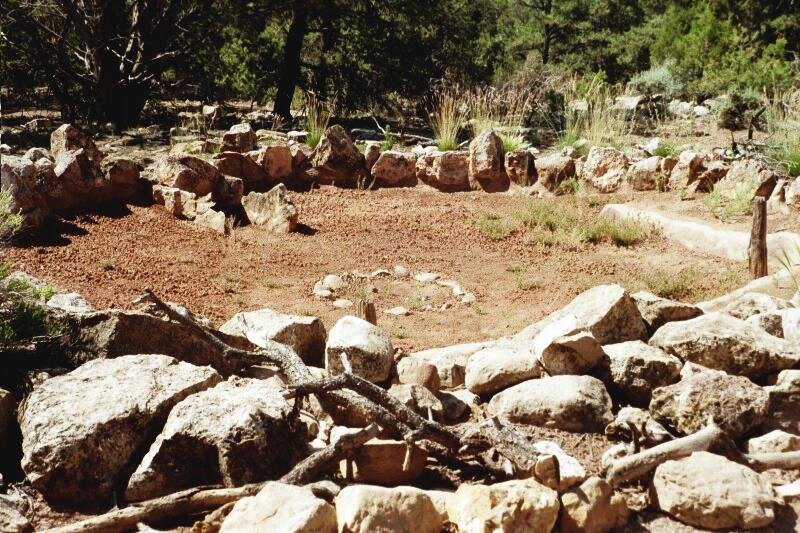
Tusayan Ruins submitted by bat400 on 6th Aug 2006. Large Kiva at Tusayan Ruins, Coconino County, Arizona.
The Tusayan ruins at the Grand Canyon National Park show two separate circular ruins that may have been ceremonial rooms, or Kivas. The smaller one appeared to have burned, was made into some other sort of space. This is the foundation of the larger Kiva, seemingly built later that the first.
There was a firepit in the center of the room and an airshaft (seen in the rear wall.) This is a common feature of both historic Kivas, and simi...
(View photo, vote or add a comment)
Log Text: None
Puerco Pueblo Petroglyphs
Date Added: 12th Sep 2010
Site Type: Rock Art
Country: United States (The Southwest)
Visited: Yes on 9th Sep 2006
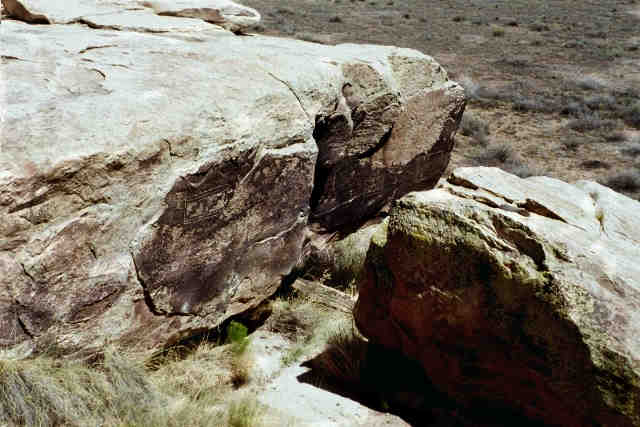
Puerco Pueblo Petroglyphs submitted by bat400 on 9th Sep 2006. Puerco Pueblo Petroglyphs, Apache County, Arizona.
These petroglyphs are found immediately south of the pueblo ruins.
The ages of the figures are thought to vary, but predate European contact. Some human figures and abstract patterns can be seen here.
The site is part of the Petrified Forest National Park.
(View photo, vote or add a comment)
Log Text: None
Canyon de Chelly - White House
Date Added: 17th Feb 2012
Site Type: Ancient Village or Settlement
Country: United States (The Southwest)
Visited: Yes on 1st Jan 0000. My rating: Condition 2
Canyon de Chelly - White House submitted by bat400 on 10th Sep 2006. Canyon de Chelly - White House Ruins, Apache County, Arizona.
This Ancestral Puebloans (Anasazi) ruin was built and occupied between 1060 and 1275 AD. The photo is taken from the canyon rim opposite the site, but there is a trail that leads to the ruin.
Photo by bat400, June 2003.
(View photo, vote or add a comment)
Log Text: None
Signal Hill
Date Added: 12th Sep 2010
Site Type: Rock Art
Country: United States (The Southwest)
Visited: Yes on 18th Sep 2006
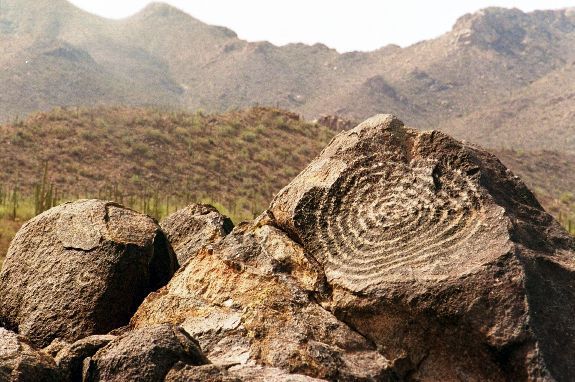
Signal Hill submitted by bat400 on 18th Sep 2006. Signal Hill, Pima County, Arizona.
Large spiral petroglyph on Signal Hill in the Saguaro National Park. The figure is placed on a sloping bolder. The angle is such that the surface facing north is in the shadow from the fall to the spring equinox and only lit in the "summer" half of the year.
Photo by bat400, June 2003.
(View photo, vote or add a comment)
Log Text: None
Enchanted Rock
Date Added: 12th Sep 2010
Site Type: Natural Stone / Erratic / Other Natural Feature
Country: United States (The Southwest)
Visited: Yes on 21st Apr 2007
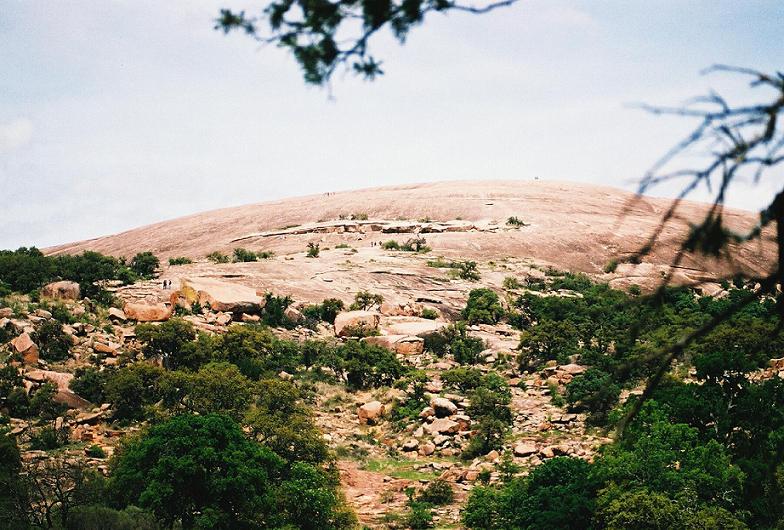
Enchanted Rock submitted by bat400 on 21st Apr 2007. Enchanted Rock. Huge pink granite dome in Texas Hill Country. Tool finds indicate habitation near here for 10,000 years. The site was considered sacred by native people.
Photo by bat400, April 2007.
(View photo, vote or add a comment)
Log Text: None
Pueblo Grande
Trip No.1 Entry No.1 Date Added: 9th Apr 2017
Site Type: Ancient Village or Settlement
Country: United States (The Southwest)
Visited: Yes on 11th Jan 2010. My rating: Condition 2 Ambience 4 Access 5
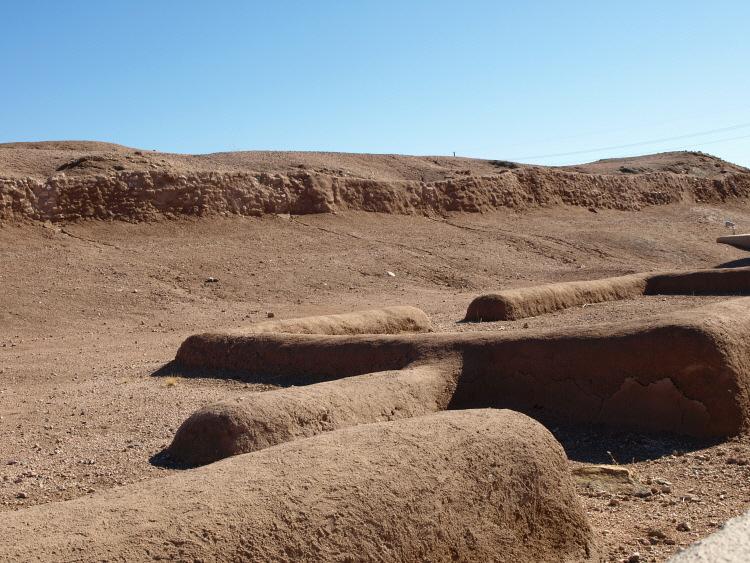
Pueblo Grande submitted by bat400 on 9th Mar 2010. The platform mound from the northwest. The remaining walls of ground level structures in the foreground.
Photo: Jan 2010, bat400.
(View photo, vote or add a comment)
Log Text: Salt River Hohokam by Public Transit and Foot.
This day trip will take you to a 1,500 year old ruin of a Hohokam village, Pueblo Grande, a butte where the Hohokam left petrogyphs, and the ruin of a Hohokam farmstead - a "suburb" of Pueblo Grande. All the sites are accessible by public transportation and walks on either city streets or maintained trails. The trip could take as little as two and a half hours or as much as five hours, but four hours touring time is a reasonable estimate if you want to fully enjoy the museum and each site.
Start at Pueblo Grande site and museum at the SE corner of Washington and 44th Street, Phoenix. On the SW corner is a [url=www.valleymetro.org/]Valley Metro[/url] light rail station, accessible by bus in the Valley Metro system. A free shuttle bus from the Phoenix Sky Harbor Airport also runs to this station regularly from early morning to late evening. I made this trip as part of a planned, 6 hour layover at the airport.
Pueblo Grande is one of the main accessible Hohokam village or town sites. The prehistoric Hohokam (1AD - 1450AD) lived in central and southern Arizona. They farmed corn, beans, squash, and cotton and are best known for their water management skills. Prior to modern reservoir systems, the Salt River flowed year round and the Hohokam built and maintained irrigation systems. Along these abandoned canals the remains of their villages and extended homesteads were found by historic Europeans. Many of the canals were so well laid out that the new pioneers often followed and simply renewed prehistoric canals to supply their own fields. The Hohokam built their villages in adobe, regularly centered around platform mounds and ballcourts. Drought, floods, and possible internal conflict caused the Hohokam to abandon the Salt River Valley in the 1400's. The historic Akimel O'odham (Pima) people are the most likely descendants of the Hohokam.
The museum on site explains the irrigation systems and describes how Pueblo Grande extended over a much larger area than is preserved today.
A visit to the Pueblo Grande site can take 1-2 hours depending on your level of interest.
Now go to "Pueblo Grande - Ball Court". [URL=http://www.megalithic.co.uk/article.php?sid=15417]http://www.megalithic.co.uk/article.php?sid=15417[/URL].
Pueblo Grande - Ball Court
Trip No.1 Entry No.2 Date Added: 9th Apr 2017
Site Type: Ancient Village or Settlement
Country: United States (The Southwest)
Visited: Yes on 11th Jan 2010. My rating: Condition 2 Ambience 3 Access 5
Pueblo Grande - Ball Court submitted by bat400 on 9th Mar 2010. The south half of the ball court. Photo: Jan 2010, bat400.
(View photo, vote or add a comment)
Log Text: The ball court is on the grounds of Pueblo Grande.
Next go to "Pueblo Grande - Park of Four Waters".
[URL=http://www.megalithic.co.uk/article.php?sid=16941]http://www.megalithic.co.uk/article.php?sid=16941[/URL].
Loma del Rio Ruins
Trip No.1 Entry No.5 Date Added: 9th Apr 2017
Site Type: Ancient Village or Settlement
Country: United States (The Southwest)
Visited: Yes on 11th Jan 2010. My rating: Condition 2 Ambience 3 Access 3
Loma del Rio Ruins submitted by bat400 on 11th Mar 2010. The ruin from the southeast. On the crest of the hill you're seeing the narrow edge of the building, two rooms across. To the right, and just below, you can make out a single room, separated from the larger, six room building on the hilltop.Photo: Jan 2010, bat400.
(View photo, vote or add a comment)
Log Text: Back at the south base of the butte, make your way NW towards Mills Ave, and then walk toward the river in the north bound lane. You'll cross a scenic bridge over Tempe Town Lake. (The year round water level is maintained by the use of inflatable barriers.)
On the north side of the river, watch for a stairway on the right that takes you down on to North Loop road. Keep heading north. As you come out from under the 202 freeway and head up hill, you'll see a large open area and a trail head on the right side of the road, with a barrier to prevent cars from parking there. You are now on the SW corner of Papago Park. The walk from the butte to this point should take less than a half hour.
Take the trail east and watch for a footbridge on your left (north). Cross on this footbridge at the Indian Bend Canal, a modernized remnant of an ancient Hohokam canal. You are now on the trail to the Loma del Rio Ruin which lies at the top of the hill directly to your right. Follow the trail in a clockwise curve up and around the hill to the ruin. There is a shaded area right next to the stabilized seven room ruin.
This was an outlying Hohokam farmstead. It lies close on the elevated freeway and overhead electrical pylons. It takes a good imagination to block these modern developments out and focus on the remains of a prehistoric farm. After visiting, return to the North Loop Road the way you came. The walk up to the ruin and back to the road is about 30 minutes.
Now you can return to a light rail station to complete your journey. If you're heading back west, toward Phoenix, continue north on North Loop Road, to Curry Road. (Nearly at Curry Road, on the left, is a park with shaded picnic areas and restrooms.)
Turn left and walk west on Curry Road, across an intersection, and straight on (Curry Road becomes Washington Street at this point.) Or, if you stopped in the park, you can make your way to the same intersection by walking west through the park.
Walk west on Washington Street until you see a rail station in the median strip. The walk from the trail head on North Loop Road to the station will take about 10 minutes.
There are many other public Hohokam sites in the Valley, but most of them require a bike or car.
